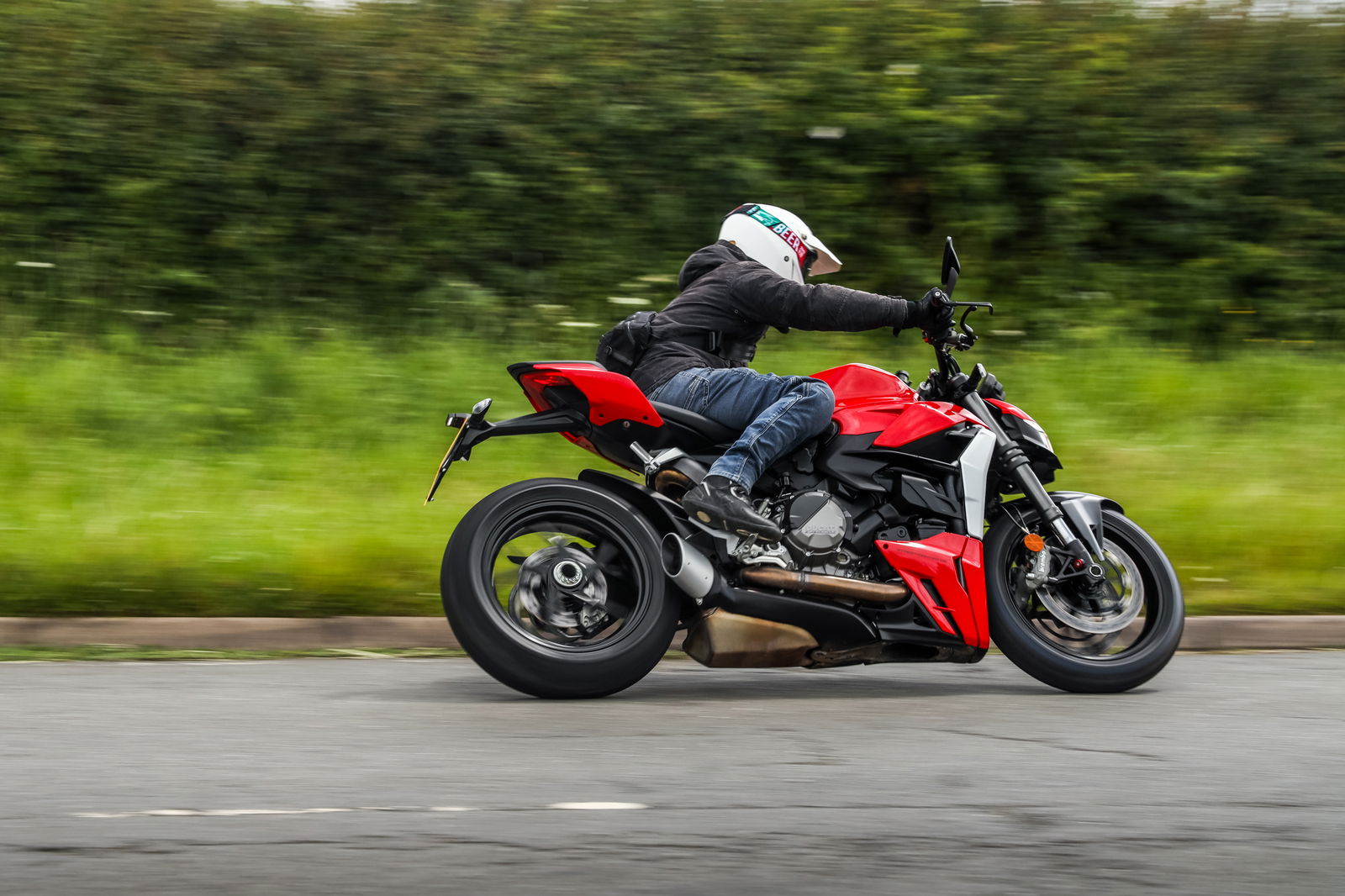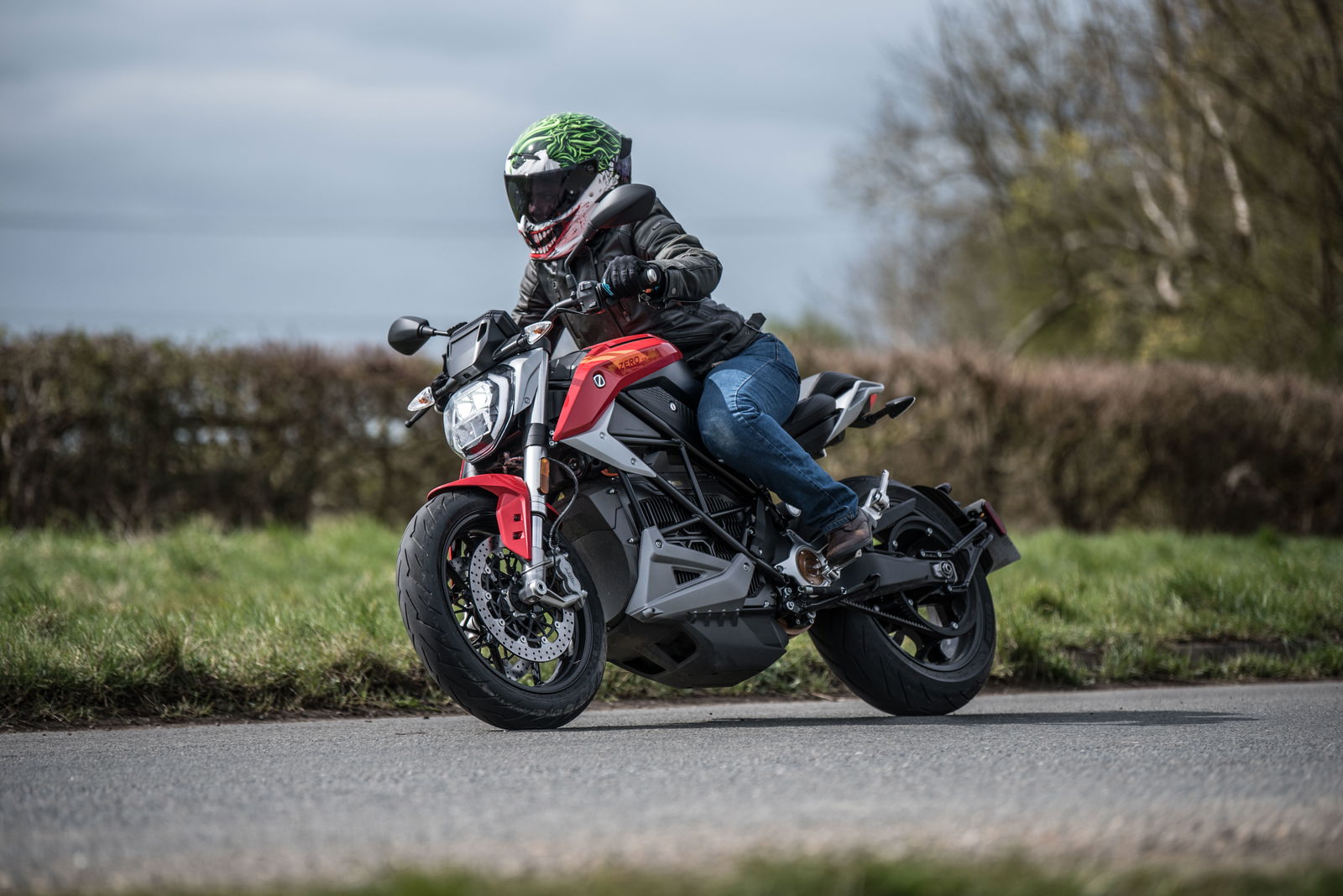Panigale V4S (2022) review
The new Ducati Panigale V4S (2022) has gained revised ergonomics, more power, improved electronics and more – is this the easiest-to-ride Panigale ever?
_1.JPG?width=1600&aspect_ratio=16:9)
The Ducati Panigale V4S (2022) is a phenomenally fast motorcycle. With its V4 engine configuration, top-spec suspension and brakes and MotoGP-derived design, more grunt and power are not top of the Panigale’s to-do list!
With that in mind, the updates for the 2022 Ducati Panigale V4 and V4S look to be sensibly thought through. It has 1.5bhp more than the previous generation, revised ergonomics and suspension, and clever torque mapping changes for the first three gears. Ducati was touring this bike as the easiest to ride Ducati Panigale to date, to find out, we went to the Jerez circuit in Spain for a day of on-track testing.
To help make the 2022 version of the bike easier to ride, Ducati went to town in multiple areas of the machine. We’ll break those down here to make it all a bit easier to swallow.
.jpg?width=1600)
Ducati Panigale V4s (2022): Aero
You’re admittedly unlikely to feel it on the road but nonetheless, Ducati has tweaked the aero for 2022. The new wings create less drag than before and still introduce 37kg to the front end at 186mph. The lower fairing now also features shark gills behind the oil cooler to help keep temperatures in check.
.jpg?width=1600)
Ducati Panigale V4S (2022): Ergonomics
One of the more notable changes for 2022 is the fuel tank and seating position which have both been altered. The tank feels more substantial which makes it easier to anchor against when braking hard and cornering. The top of the tank is now flatter and makes getting into the all-important tuck position easier than before. The seat is also flatter – not that many will feel it – and is covered with a new material that makes you feel more secure when hanging off the bike.
.jpg?width=1600)
Ducati Panigale V4S (2022): Engine
With slightly more power than before, the most notable change for 2022 is the gearbox and the introduction of some smart torque mapping in the first three gears. The new mapping softens the delivery in gears 1, 2, and 3, while sixth gear is now taller than before, and first and second gear is now more closely matched. The torque mapping in the first three gears can be removed for a more full-fat riding experience.
.jpg?width=1600)
Ducati Panigale V4S (2022): Suspension and chassis
Counter-intuitively the new bike runs slightly softer springs than the outgoing machine (down from 10 N/mm to 9.5N/mm) and stroke has been increased from 120mm to 125mm.
At the rear of the bike, the swingarm pivot point is now 4mm higher than on the 2021 machine, a move that is designed to help dial out any squatting under acceleration and keep the handling in check on the corner exit.
.JPG?width=1600)
Ducati Panigale V4S: Wet Sessions
Jumping on a 200+bhp sports bike and riding on a press launch is a fairly nerve-wracking affair in its own right. Doing so after torrential rain in the morning when the track is still not dry – even more so.
After the press briefing to discuss the new bike is out of the way, some mandatory safety briefings were done, and we were kitted up and waiting for the first sessions on the Jerez MotoGP circuit.
Thankfully, all the bikes were kitted out with Dunlop racing wet tyres and a trick optional riding mode specifically designed for riding on track in the rain. With the power down to just 150bhp, and the traction control and ABS cranked up, we headed out to see how well the updated electronics dealt with the slippery surface.
.jpg?width=1600)
First things first; race wets are witchcraft. Add in the Wet Evo mode and after lap three I was feeling like a wet weather hero on the new Ducati. Just as I’d finished mentally posting off my ACU licence application, a certain Mr Johan Zarco brought me down to earth with a bump by sweeping around the outside of me at the fast turn 8. A rider getting their knee and elbow down in the wet is a sight to behold, even more so when it happens just a few inches from your right foot.
This fairly low-speed intro to the bike told me more about the electronic updates than anything else. The torque mapping in the first three cogs was extremely noticeable, with the traction control having to work less hard coming out of slower corners as a result. While the lack of electronic intervention from the TC would improve the lap times of a more accomplished rider, from my point of view it just made the whole experience a much more enjoyable, and dare I say it, relaxing experience.
.JPG?width=1600)
Ducati Panigale V4S: Dry sessions
Once lunch was dispatched, we had the joyous sight of a warm, sunny and best of all, dry Jerez circuit to go and play on. Pirelli SC1 racing slicks were slotted on all the bikes, and what started out as a bit of a damp squib was looking like it was going to be a corking afternoon of track-based shenanigans.
The first sessions was a steady away affair, trying to spot any lingering wet patches on the track – there were a couple at turn nine and one more at the final hairpin. Even at this lazy post-lunch pace, the Ducati was feeling surprisingly easygoing. We’d been dialled up to the full 215.5bhp for the dry sessions, and compared to Panigales I’ve ridden in the past, it was all very well mannered.
With corner speed increasing I started to do my best impression of a MotoGP rider, meaning hanging off the bike and dragging a knee in the fast third gear turn eight. The ergonomics of the 2022 bike are not so much all-new, in that the seating position still feels the same, it's just all been tweaked to make the rider feel more at home.
.JPG?width=1600)
As the sessions go on the track gets more into the fun zone temperature-wise, and the Panigale begins to really come into its own. At the end of the long back straight, I was nudging 177mph indicated on the lovely TFT dash. And it's at those kinds of speeds that the previous Panigale could pose a problem. The first change that you notice is the change to the ergonomics, especially around the fuel tank. It feels chunkier, easier to lock your thighs onto and helps you take the load off your arms when slowing for the hairpin at the end of the straight.
The second thing I noticed though is the one thing that for me makes this 2022 model the easiest Panigale to ride. The forks for this year are Öhlins semi-active electronically adjustable items, just like before. But for this year they are given a shot in the arm in the form of pressurised internals, just like a factory race bike. The pressurisation in the forks helps prevent tiny bubbles from forming in the cartridge, something that after multiple laps can cause a wayward feeling front end.
.JPG?width=1600)
Another forking change for the model is an increase in stroke and a softer spring. Add these elements to the pressurised kit from Öhlins and you have a beautifully stable, oh so forgiving front end. Gone is the overly hard and almost brutal feeling of the previous generation bikes, and in its place is a plusher more stable platform to work from.
Can I feel the difference that comes from moving the swingarm pivot 4mm higher? Probably not, but in all phases of the corner, the new Ducati feels uncharacteristically refined and easy to ride. The anti-squat action that comes from shifting the swingarm pivot up, helps to reduce the amount of work the front and rear suspension has to do to keep the front end on the track surface.
.JPG?width=1600)
Pulling into the pits after each dry session, I was continually surprised by the lack of panting and heavy breathing I was doing. Riding any modern sports bike on track is a very physical affair, and the Panigale is normally one of the most physical to ride. Or should I say was?
Keep it in the Race Evo B mode (which engages the torque mapping in the first three gears), and the head-shaking badassery of old is pretty much all but eliminated. And I don’t think that means you’ll be missing out on much speed either. The new, easier to ride Panigale takes less out of you, under acceleration, braking and in the corner. For middle-aged middleweights like myself, that means you can ride harder, for longer and get the most out of your on-track sessions.
.JPG?width=1600)


